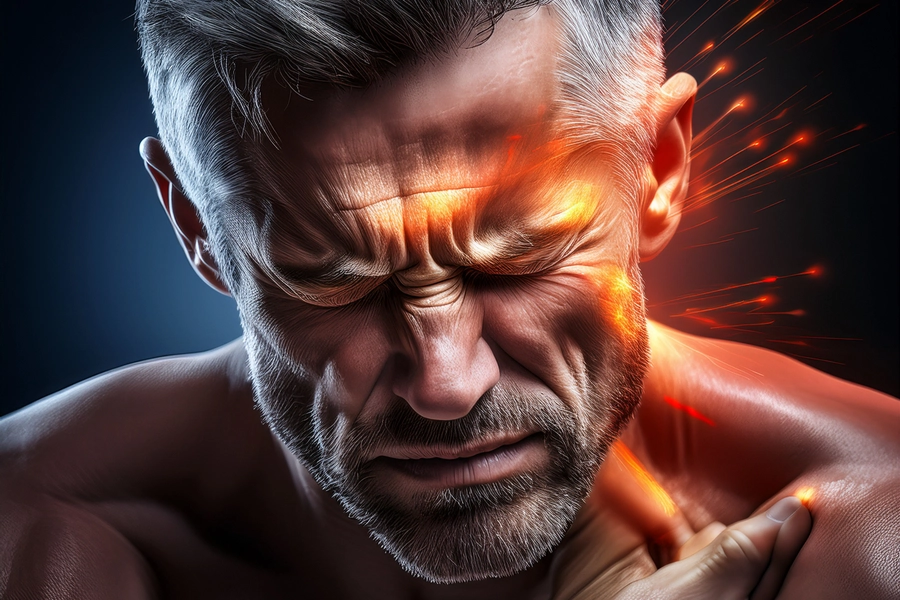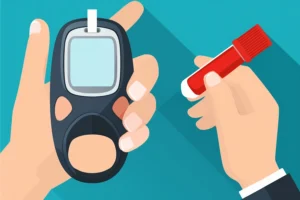“How does a medicine know where I have pain?”
This is a question many people have asked and honestly, it’s such a good one.
It almost seems like magic. For example, you may take a tablet for a headache and before long, the pain fades. But have you ever wondered how does the medicine know the pain is in your head and not, say, your foot? Does it only work where the pain is or does it numb everything?
Let’s explore the fascinating science behind how painkillers really work.
What Is Pain?
Pain is your body’s way of saying, “Something’s wrong.”
It’s a built-in warning system that helps protect you from harm. When you touch something hot, feel a sharp object or get injured, pain signals your brain to react like pulling your hand away or resting the injured area.
This natural response helps to prevent more damage and gives your body time to heal. But when pain doesn’t go away, becomes too intense or happens without a clear cause, it can become a problem on its own. Uncontrolled or chronic pain can affect your sleep, mood and quality of life, and may even slow down recovery.1
Understanding the Physiology of Pain: What Really Happens in Your Body?
Pain, how does it actually work? Let’s break it down in a simple way:2
1. Detection: The Body’s Alarm System
When you get hurt like touching something hot or stubbing your toe, special nerve endings in your body called nociceptors sense the damage. These are found in your skin, muscles, joints and even your internal organs.
2.Transmission: Sending the Signal
The nociceptors send an electrical signal through nerves to your spinal cord and then up to your brain. This whole journey happens in a fraction of a second.
3.Perception: Feeling Pain
Your brain receives the signal and decides what kind of pain it is, like sharp, dull, burning, and how bad it feels. This is where you actually feel the pain. It’s not just a signal anymore, it’s an experience. Pain isn’t just physical, it’s also emotional and psychological. How much pain you feel can depend on your mood, stress levels, focus and even past experiences.
What Happens When You Take a Painkiller?
Painkillers, also known as analgesics, are medications designed to reduce or eliminate pain.
When you swallow a painkiller, like paracetamol (acetaminophen) or ibuprofen, it doesn’t zoom directly to your head, back or knee. Instead, the medication is absorbed into your bloodstream and circulates throughout your entire body.
It doesn’t search for pain or detect where it is. What it does instead is interact with the body’s pain signaling system to reduce how pain is produced, transmitted or perceived.
So How Does It Work?
There are four main types of painkillers, and each works in a unique way to provide relief.3
1.Non-Opioid Analgesics Examples: Paracetamol, Aspirin, Ibuprofen These are the most commonly used painkillers for mild to moderate pain, fever and inflammation.
◦ NSAIDs like aspirin and ibuprofen block enzymes (COX) involved in the production of prostaglandins—chemicals that trigger inflammation and pain at the site of injury.
◦ Paracetamol works mainly in the brain and spinal cord to alter the perception of pain but has minimal anti-inflammatory effect.
2.Opioid Analgesics Examples: Morphine, Fentanyl, Tramadol Used for severe pain, especially after surgery or in cancer patients.
◦ Opioids bind to opioid receptors in the brain and spinal cord, blocking the transmission of pain signals.
◦ They don’t treat the cause of pain but reduce the sensation, helping patients feel more comfortable.
3.Compound Analgesics Examples: Co-codamol, Co-codaprin These are combinations of two different types of painkillers (often a non-opioid with a mild opioid).
◦ They work on multiple pain pathways, providing enhanced pain relief by combining the effects of both drugs.
4.Adjuvant Analgesics Examples: Amitriptyline, Duloxetine, Cyclobenzaprine These are drugs not primarily designed for pain but are effective in managing chronic or nerve pain.
◦ They work by modifying neurotransmitter levels in the brain and spinal cord, improving the body’s natural ability to control pain signals.
Then Why Does It Feel Like It Works on That Specific Area?
Great question! The medicine doesn’t “know” where your headache, backache or joint pain is. It works on the entire pain system. But because the most intense pain was coming from a specific area, for example like your head during headache, you feel relief there first. It’s your brain registering that the “pain messages” from that spot have quieted down.
Systemic vs. Targeted Action
Most painkillers have a systemic action; they affect the whole body. However, some medications can be locally applied (like gels or patches) and act only on a specific area by not entering the bloodstream in large amounts. But for oral painkillers, the action is always body-wide, not pinpoint-specific.
Conclusion
So, No, your medicine doesn’t come with a GPS system to find your headache or joint pain. But it works in a wonderfully intelligent way to change how pain signals are generated and interpreted in your body. And that’s the beauty of medical science, complex chemistry doing powerful things in simple-looking tablets.
A Gentle Reminder
While painkillers are useful, they’re not a cure for the underlying cause of pain. They manage symptoms, but if pain persists, recurs frequently or worsens, it’s important to consult a healthcare provider.
References
- Shuang Liu, Leigh Kelliher. Physiology of pain—a narrative review on the pain pathway and its application in the pain management. Digestive Medicine Research.2022;5. https://dmr.amegroups.org/article/view/8443/html
- Chen JS, Kandle PF, Murray IV, et al. Physiology, Pain. [Updated 2023 Jul 24]. In: StatPearls [Internet]. Treasure Island (FL): StatPearls Publishing; 2025 Jan-. Available from: https://www.ncbi.nlm.nih.gov/books/NBK539789/
- Yiu, Kai Sun. Pain Killers and their Mechanisms of Action. Research Gate. 2024. https://www.researchgate.net/publication/384571232_Pain_Killers_and_their_Mechanisms_of_Action




